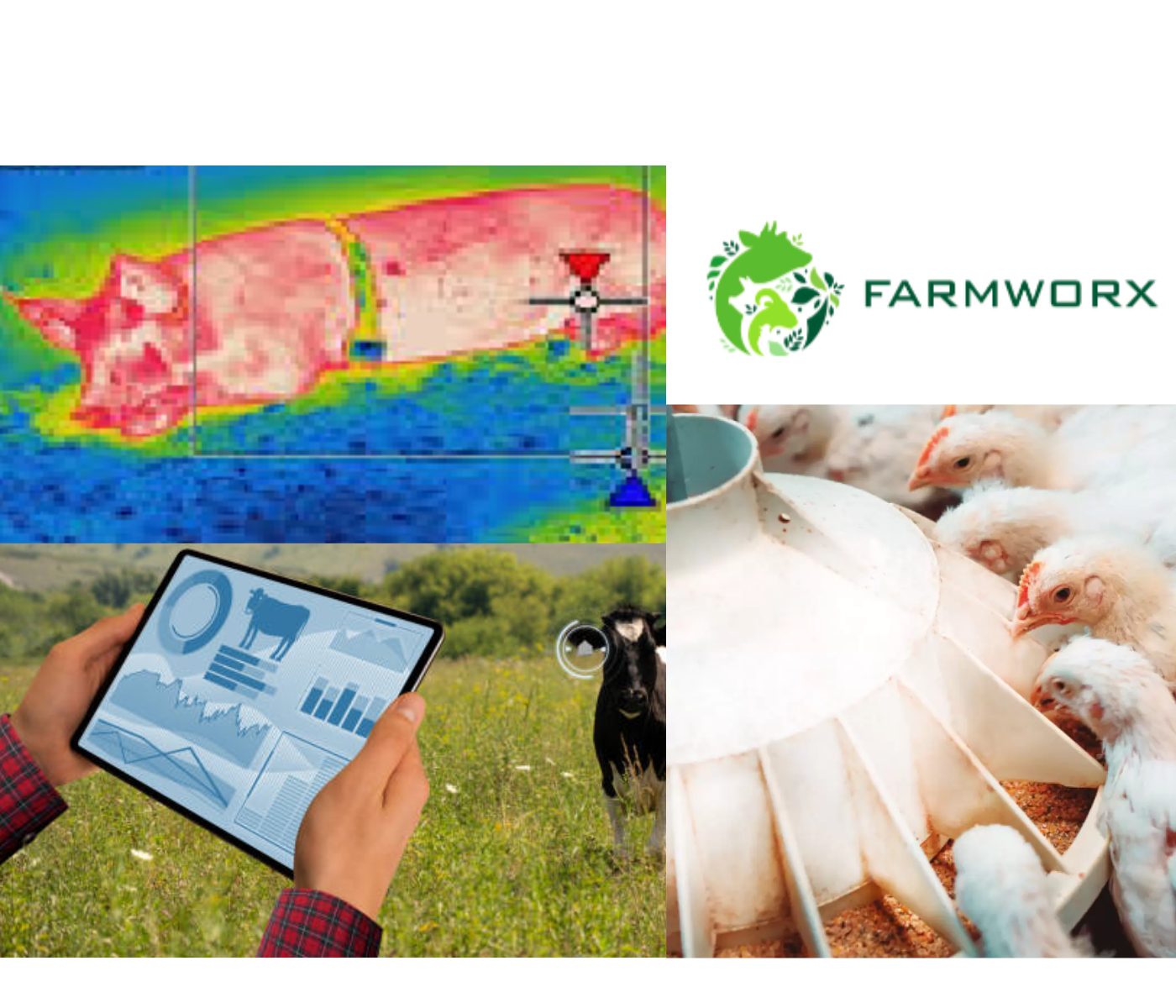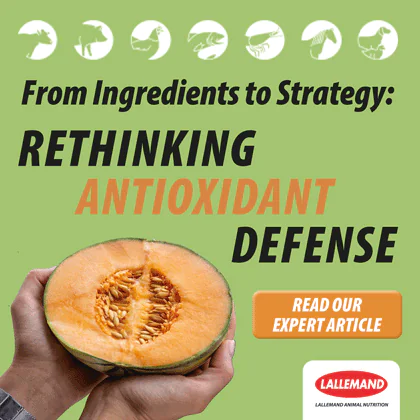Monitoring Nutritional Utilization in the Digital Age.
Using Modern Technology to Improve Livestock Production, Sustainability, Efficiency, and more…
Real-time monitoring of animal’s optimal nutrient utilization can be problematic and time consuming in commercial operations. Recent developments in sensor technology, and Artificial Intelligence (A.I.), have made production more streamlined and efficient. Digitization has allowed livestock producers to optimize their operations to create better systems, less environmental impact, lower production costs, and produce a better finished product.
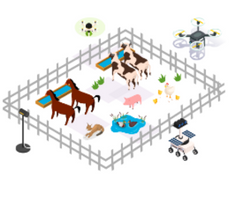
Remote sensors have been developed to monitor nutritional utilization by livestock, in real time, under most conditions. Artificial Intelligence software is available for real-time monitoring of all measurable information, 24.7, keeping records and making decisions based on that information, all autonomously. Employing sensor technology and Artificial Intelligence can result in significant improvements regarding efficiency, sustainability, and quality.
Factors Involved in Determining the Efficiency of Nutritional Utilization
Nutritional utilization is a valuable factor to consider, as it relates directly to the environmental impact of livestock production, utilization of resources, and overall production efficiency. Nutritional Utilization represents the ratio of nutritional supply vs. nutritional requirements under varying circumstances and desired results. Nutritional supply is the amount of feed, and the nutritional composition of the feed itself.
Nutritional requirements for any specific animal, or group of animals, depend on their basic biological maintenance needs, as well as their zootechnical performance, genetic factors, and how the current environment affects them (heat, cold, damp, humidity, crowding, immunological challenges, etc.). There are five basic factors to consider when determining nutritional requirements. These are: Maintenance, Growth, Reproduction, Lactation or Egg-Laying. These are variable and constantly changing. Determining nutritional utilization can allow producers to implement feeding strategies to obtain maximum performance and efficiency under varying conditions.

The determination of nutritional requirements can be problematic for many reasons. An individual animal’s requirements can differ widely due to: gender, health, environment, age, genetics, etc. To be efficient, in theory, nutritional requirements need to be met for each individual animal, according to their specific needs. This is difficult to achieve using traditional feeding models. Feed selection involves several considerations, including total nutritional value, as well as other factors such as digestibility, palatability, and more.
Inconsistency in animal feed can be a significant problem. Feed producers often change their feed formulas without previous notice, which could mean that the feed you bought last week is not the same as this week. Sometimes these changes may be beneficial for your animals, but other times they are just just better for the feed producer. Hence, the determination of nutritional utilization efficiency is important in order to be able to adjust to changing conditions.
How Sensor Technology and AI are Improving Livestock Farming
The use of sensors, Infrared Imaging, vocalization platforms (sound sensors), wearable and swallowable transponders, AI, and other digital technologies, are a recent development in livestock production. Such tools allow more precise analyses of internal conditions that can indicate improper nutrition, health problems, stress levels and more. This is the future of animal farming.

Sensors are used along with Artificial Intelligence algorithms, cameras, thermometers and other instrumentation platforms to continuously monitor various aspects of herds, or individual animals. Locations, habits, behavior, health, sustainability and more can all be monitored in real time and immediately evaluated. Sensors can be wearable devices, or subcutaneous transmitters. Wearable sensors are usually in the form of ear tags, or collars. Subcutaneous sensors can be injected or surgically inserted under the skin of the animal and they are only used for research purposes. These types of sensors are not available for commercial use.
Nutritional utilization efficiency is monitored through the use of sensors in silos, automated feeding systems, and surrounding locations. This allows the monitoring of temperature, rumination, feeding duration, and other relevant data, for herds, flocks or individual animals. Artificial Intelligence-based applications make decisions regarding the adjustment of feed amounts and composition based on the information provided by sensors. This is all done in real time, and autonomously, with occasional human monitoring.
In a study carried out in Germany, Denmark, Lithuania, and Latvia, 2200 dairy cows had ear tag sensors placed and automated feeding systems were used to monitor each time an individual cow visited the feeder. The amount and type of feed as well as that of the consumed supplements were also monitored. Results showed that cows using the system only had a 1% increase in milk production, but a 20% increase in milk quality. Other benefits included but were not limited to a 6% reduction of disease and a 24% drop in the number of culled animals due to health reasons, compared to the control group.
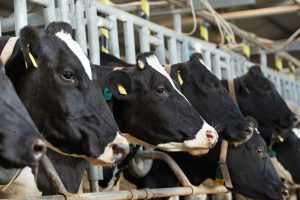
A basic automated feed system usually consists of a ‘hopper’ which is controlled by software and connected via the Cloud to a system that monitors, dispenses, and adjusts feed. It can be used for entire herds, or individual animals. This, along with other information from wearable sensors, cameras, thermometers, and other sources, is sent to an Artificial Intelligence-based program that can automatically manage, adjust, and dispense feed, in addition to keeping records and sensing patterns. It can alert if an animal is not eating enough, or if its eating habits have changed. The entire system can be managed by the farmer or rancher from a smart phone in the field, or at home on a computer, laptop, or even an iPad or Chromebook.
In a study carried out in 2021, pigs were fed swallowable capsules with transponders in them. These, measured things like pH, temperature, transit times, and other internal values in order to calculate various parameters, such as nutrient utilization. The 4 pigs were tested under fasting condition as well as under fed conditions. Gastric pH, and stomach pressures were also recorded and analyzed. It was found that gastrointestinal pressures varied from 2.3 to 4.0h. Gastric emptying pressures were also variable, from 20 to 233 h. The average time for gastric emptying ranged from 2.2 to 4.0 hours. This kind of information is valuable when assessing how the animal is using its feed.
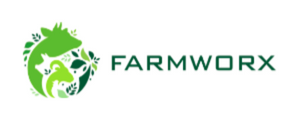
Our research group at Farmworx-Wageningen, conducted multiple experiments to evaluate physiological stress in pigs using multimodal sensor technologies. This was done through the use of heart rate and respiration rate wearable sensors along with video cameras and thermographic imaging. Allowing us to collect a huge volume of multimodal data from pigs before and after feeding associated to specific nutrients. The obtained results (Figure 1) from our Artificial Intelligence based mathematical model indicate that measuring heart rate along with body surface temperature can offer valuable insight for the monitoring of nutrient utilization in pigs.
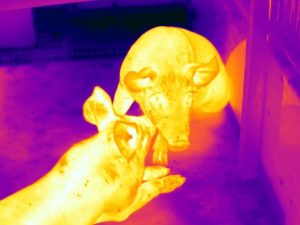
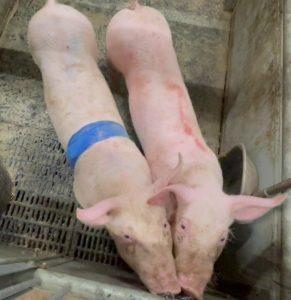
Figure 1. Precision Pig Feeding – Thermal images of pigs collected from multiple experiments conducted by Farmworx, Wageningen (Link). The role of feed processing and nutrient utilization is a function of hydrothermal regimens and radiant heat loss in pigs as measured by the infrared thermography, heart rate and respiration rate. Gestating swine nutrient recommendations are possible based on real-time heart rate data. Blue color tape on the body of the pig is the wearable belt type dual heart and respiration rate sensor platform.
Digitalization, Sensor Technology, and Artificial Intelligence can allow producers to determine when their animals have less-than-ideal nutritional utilization in order to proceed accordingly. Automatic feeders can be connected via the Cloud to an automated system that can customize and adjust feed and supplements for each animal. Artificial Intelligence can be updated continuously with real-time information and is able to discern patterns and make decisions based on this. It can even make suggestions and feed information to decision support systems for on-farm daily management protocols.
Thermographic Imaging and Audio recording can measure stress levels in laying hens
Poultry temperatures can be measured using infrared imaging sensors (Figure 2). A chicken’s temperature can be an indicator of nutritional utilization. In a recent study (Link)carried out by our group at Farmworx, Wageningen, 40 laying hens were subjected to stress every other day and monitored using infrared imaging. Measuring the temperature of various parts of the chickens’ bodies in vivo. Audio recordings were also collected to measure poultry vocalizations and determine its relationship with stress. Twelve more chickens were used as a control group and were not subjected to stress. Stress can adversely affect the chicken’s nutritional utilization.
Thermographics were used to obtain images before stress was introduced, immediately after, and one hour after causing stress. Audio recordings were taken at the same time. The obtained results were interesting. A correlation between body temperature and stress levels was found, with certain variability regarding the amount of time elapsed in relation to stress induction and the recorded vocalizations. Immediately after stress was induced, the birds showed a significant decline in body temperatures compared to the test group. This was most apparent in the beak and comb areas of the birds. No relevant change was observed in pre-stress and post-stress conditions.
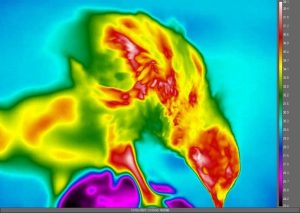
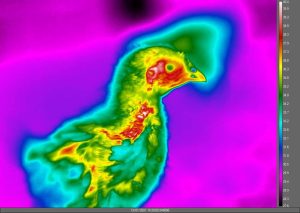
Figure 2. Thermal videos & images of laying hen chicks collected from multiple experiments conducted by Farmworx Wageningen. Changes in the surface temperature of the chicks is an indication of stress, dynamics of energy content and thereby a way of assessing nutrient utilization.
Vocalizations were also found to decrease during stress. Prestress and Post stress showed no significant changes in vocalizations. Pre-stressed birds averaged 39.7 calls per minute. During stress, their calls decreased to an average of 12.1 vocalizations per minute. Age, ambient air temperature, temperatures in different body areas of the chickens, and vaccination status were considered as influential factors.
The Future of Digitalization to Monitor Efficient Nutritional Utilization
The demand for livestock products is increasing, and will continue to do along with population growth. This will create increased competition for resources, grazing land, water, etc. Livestock farming will be put under even greater pressure due to sustainability concerns and the need to function in a carbon-restrictive environment. ‘Green’ legislation and changing social attitudes will create further challenges for this sector. Under this scenario, digitalization, sensor technology and Artificial Intelligence-based management will become more common in the near future.
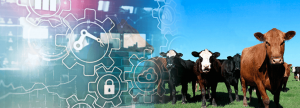
Innovations and developments aimed at monitoring nutritional utilization in order to conserve resources, improve sustainability, and improve efficiency will continue to enhance the way poultry, cows, goats, sheep, pigs, and other food animals are produced. Digital sensors A.I. Management software, and automated feeding systems from companies like Hanen, Maximus, and Trioliet will allow individual animals to be fed according to their unique biorhythms, genetics, health conditions, and sustainability concerns. This will create new jobs for: livestock workers, sensors and software manufacturers, as well as in other related fields. Therefore, digital (precision) livestock farming (Link) technology will continue to improve, making livestock production more efficient.

